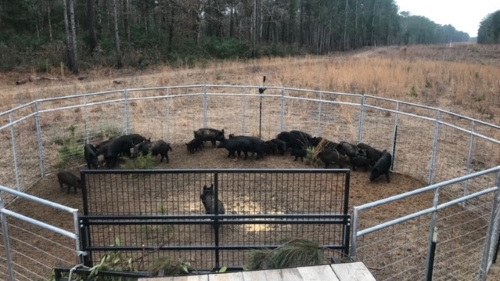News Release

NPS Photo
|
Subscribe
|
Contact: Megan Urban, 409-951-6721
KOUNTZE, Texas – Superintendent Wayne Prokopetz announced today that the preserve will begin issuing this season’s free feral hog trapping permits on Monday, February 7, 2022.
“Hog management is an ongoing priority for the preserve and southeast Texas in general. We are encouraged by the success of the last couple of years' hog trapping seasons and look forward to providing more opportunities to harvest hogs from the preserve this season,” stated Superintendent Prokopetz.
Feral hogs are an invasive species descended from domesticated pigs brought to North America by European settlers. Their populations have increased in recent decades resulting in greater competition with native wildlife and increased habitat damage caused by their feeding activities.
Since the inaugural 2019 season, there have been over 400 hogs removed through the trapping permit process. Permits will be issued first-come, first-served and can be picked up in-person at the visitor center from 9:00 am to 5:00 pm, seven days a week.
Before arriving at the visitor center, those interested are highly encouraged to review the Big Thicket feral hog trapping regulations and scout out several trap locations to be approved upon receiving a permit. Download maps of the preserve's trapping areas on our trapping page.
The recreational pursuits of hunting, fishing, and trapping have been a part of the preserve since its establishment in 1974. In the fall of each year, Big Thicket National Preserve permits public hunting of white-tailed deer, squirrel, rabbit and other game species. Public trapping of furbearing species in the preserve has also been a long-standing tradition. Visit our hunting page for more information about hunting and trapping.
Big Thicket National Preserve is located in Southeast Texas, near the city of Beaumont and 75 miles northeast of Houston. The preserve consists of nine land units and six water corridors encompassing more than 113,000 acres. The Big Thicket, often referred to as a “biological crossroads,” is a transition zone between four distinct vegetation types – the moist eastern hardwood forest, the southwestern desert, the southeastern swamp, and the central prairies. Species from all of these different vegetation types come together in the thicket, exhibiting a variety of vegetation and wildlife that has received global interest.
-NPS-
Last updated: February 2, 2022
